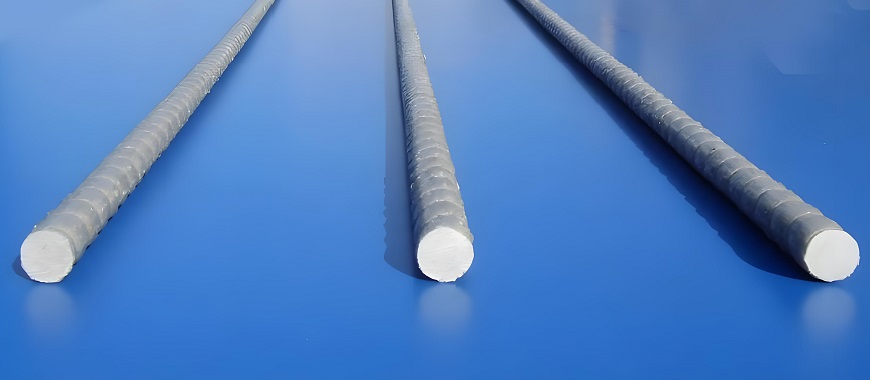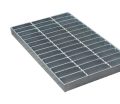
Galvanized steel, fundamentally, is steel that has undergone a galvanization process, wherein it is coated with a protective layer of zinc to shield it against corrosion. This layer significantly boosts the steel’s resilience and longevity, making galvanized steel an indispensable material in the arenas of modern construction and industry. Its importance is particularly underscored by components such as the galvanized steel bar, which finds extensive application in reinforcing concrete structures, among various other uses. The galvanized steel bar exemplifies the material’s essential role in ensuring that construction projects and industrial applications can achieve enhanced durability and withstand the rigors of time and environmental exposure. By integrating such components, the construction and industrial sectors benefit from materials that combine strength with corrosion resistance, thereby safeguarding the integrity and functionality of projects and products alike.
What is Galvanized Steel Bar?
Galvanized rebar, a central component in the longevity and integrity of reinforced concrete structures, is regular steel rebar coated in a layer of zinc. This process of galvanization adds a protective barrier around the rebar, shielding it from the corrosive elements which are often present in harsh environmental conditions. The galvanized steel bar ensures that the core steel is safeguarded, substantially prolonging the service life of the rebar and the structures it supports.
The Galvanizing Process
The process of galvanization involves several key steps:
- Cleaning: The steel rebar is rigorously cleaned to remove any impurities, oil, or scale that could hinder the adherence of the zinc coating. In the comparison of pink rebar vs steel rebar, this cleaning process is essential for ensuring that both types of rebar are properly prepared for coating, enhancing their durability and corrosion resistance.
- Pickling: The rebar is dipped into a solution, typically hydrochloric or sulfuric acid, to eliminate any remaining mill scale and iron oxide.
- Fluxing: The rebar is then passed through a flux solution, usually consisting of ammonium chloride or zinc ammonium chloride, to prevent any oxidation before galvanization.
- Galvanizing: The core event in the process, the cleaned and fluxed rebar is submerged in molten zinc, which is typically at a temperature of around 830°F (443°C).
- Cooling: After being immersed in the molten zinc, the rebar is cooled—either in air or by quenching in water—to allow the zinc coating to harden.
- Inspection: Each galvanized steel bar is then carefully inspected to ensure the coating is complete and adhering correctly. This quality control step checks for consistency in thickness and appearance.
- Finishing: Any excess zinc is removed, and the ends of the rebar may be color-coded for identification.
- Curing: The coated rebar is left to cure, allowing the zinc to form a robust and highly resistant layer, known as zinc carbonate, due to its exposure to the carbon dioxide in the air.
Benefits of Using Galvanized Rebar
The use of galvanized steel bar as rebar possesses numerous advantages:
- Increased Durability: Zinc, being less reactive than steel when exposed to the elements, ensures a vastly extended lifespan for the galvanized rebar.
- Corrosion Resistance: The impervious layer of zinc acts as a sacrificial anode, thereby providing exceptional protection against rust and corrosion.
- Cost-Effectiveness: Although the initial investment might be higher, the reduced maintenance costs due to the longevity of galvanized rebar make it a cost-efficient choice in the long term.
- Time Savings: Lower maintenance needs translate to fewer repair projects and less downtime, thus saving time throughout the lifespan of the structure.
- Environmental Resistance: Galvanized steel bar is particularly suited for structures exposed to challenging environments, including coastal and industrial areas.
- Safety Increases: The structural failure risk is substantially decreased due to the enhanced longevity of the reinforcement.
- Long-term Aesthetics: Unlike regular rebar that may stain concrete as it corrodes, galvanized rebar helps maintain the aesthetic appearance of concrete structures.
- Ease of Inspection: The integrity of the galvanized coating can be easily verified through non-destructive testing methods.
The strategic use of galvanized steel bar in rebar applications thus provides significant reinforcement benefits, ensuring that the vital backbone of concrete structures remains uncompromised over time.
Customizable Large Fiberglass Tubes for Versatile Project Needs
Types and Specifications of Galvanized Steel Bar
The versatility of galvanized steel bar in construction projects is underscored by the range of types and specifications available. Each project demands careful consideration of the size, shape, and specification of galvanized rebar to ensure optimal performance and longevity.
Different Sizes and Shapes
Galvanized rebar is manufactured in various shapes and sizes to cater to wide-ranging structural requirements. The most commonly encountered forms are:
- Round Galvanized Rebar: Often used in traditional reinforced concrete structures, round bars are available in diameters ranging from 6mm to 40mm. This variety is popular due to its ease of use and universal applicability in various structural elements like beams, columns, and slabs.
- Flat Galvanized Rebar: Flat bars are used in applications requiring a broader surface area for better adherence to concrete. They are typically employed in constructing floors or specific types of slabs needing enhanced reinforcement on a flat plane. In similar situations, ultralight fiberglass rods are sometimes integrated into designs where flexibility and corrosion resistance are prioritized, further extending the range of possible solutions for modern infrastructure needs.
The choice between round and flat, along with the specific dimensions, plays a crucial role in the structural integrity and durability of the reinforced concrete elements.
Choosing the Right Specifications
Selecting the appropriate specification of galvanized steel bar is crucial for any construction project. Here are the key considerations:
- Structural Requirements: Understanding the load-bearing needs of the structure is paramount. Heavier loads will necessitate thicker, more robust rebars.
- Environmental Considerations: In highly corrosive environments, like coastal areas, the choice of thicker galvanized coatings can provide extra protection against corrosion.
- Budget Constraints: While galvanized rebar typically involves a higher upfront cost compared to uncoated rebar, its longevity and reduced maintenance needs can make it a more cost-effective solution in the long run.
- Design Specifications: The architectural design dictates the size and shape of rebar. Complex structures may require specific rebar shapes for optimal stress distribution. In these cases, Fiberglass rebar can be a valuable option, especially in environments where corrosion resistance and durability are critical. The flexibility and strength of fiberglass rebar allow it to meet the unique requirements of intricate designs, ensuring both structural integrity and long-term performance.
- Code Compliance: Construction codes and standards can dictate the minimum specifications for galvanized rebar to ensure safety and performance standards are met.
- Future Flexibility: Consideration for future modifications to the structure might influence the choice of rebar. Some specifications may be more adaptable to future expansion or modification than others.
- Aesthetic Preferences: For structures where the appearance of the rebar might be visible and contribute to the aesthetic appeal, choosing the right size and shape becomes a visual as well as a structural decision.
- Ease of Installation: The choices made regarding specifications can impact the ease of installation. For instance, heavier, thicker bars may require specialized equipment or techniques to place and secure properly.
Selecting the right types and specifications of galvanized steel bar requires a comprehensive approach, considering all potential influences on the structural integrity, durability, and overall success of the project. Proper selection aligns with engineering principles, safety standards, and aesthetic requirements, ensuring that the final structure stands the test of time, environment, and use.
Purchasing Galvanized Steel Bar
Acquiring the right galvanized steel bar for construction projects involves thorough knowledge of the marketplace and understanding the numerous factors that influence their price. Being well-informed about these factors will ensure that you are getting a reasonable deal for the material’s quality and durability.
Understanding Price Factors
When purchasing galvanized rebar, several inherent cost-driving factors come into play. These are critical in understanding to ensure you make an informed and economical choice. Below is an analysis of eight key factors that affect the price:
- Raw Material Costs: The price of steel and zinc, used to galvanize the rebar, can fluctuate due to market supply and demand affecting the overall cost.
- Galvanization Process: The complexity of the galvanization process, which includes cleaning, dipping, and curing of the rebar in the protective zinc coating, also adds to the cost.
- Market Demand: High demand for galvanized steel bar in the construction industry can drive up prices, especially during building booms or in regions with rapid development.
- Transportation and Logistics: Costs associated with transporting raw materials and finished products from the manufacturing facility to the construction site impact the final price.
- Quantity Ordered: Bulk orders may attract discounts, whereas small, customized orders of galvanized rebar often come at a premium due to the scaling inefficiencies.
- Regulatory Compliance: Suppliers need to adhere to strict standards and codes, which can involve additional processes and documentation, hence, increasing the cost.
- International Trade Policies: Tariffs and trade policies can significantly affect the cost of raw materials and finished products, influencing the price of galvanized rebar.
- Technological Advancements: Innovations in the production process could reduce costs over time, but initial adoption of these technologies may require investment, potentially affecting pricing.
How to Find a Supplier
Locating the optimal supplier for galvanized steel bar requires both knowledge and strategy. Here are nine points to guide you in finding a reliable supplier:
- Research Online: Initiate your search with internet research to identify local and international suppliers who offer galvanized rebar.
- Check Industry Directories: Utilize construction industry directories and trade association member lists for references to reputable suppliers.
- Quality Certifications: Only consider suppliers that can provide certification for the quality of their galvanized bar, ensuring compliance with relevant standards.
- Supplier Reputation: Look for reviews and testimonials from previous customers to gauge the supplier’s reputation and reliability.
- Ask for Quotes: Solicit multiple quotes to compare prices and get a sense of the market rate for the specifications you require.
- Lead Times: Consider the supplier’s ability to meet your timeline, ensuring they can deliver the rebar when you need it.
- Minimum Order Requirements: Clarify if the supplier has minimum order constraints that align with the quantity you need.
- Customer Support: Evaluate the level of customer support offered by the supplier, particularly for technical queries and order assistance.
- After-Sale Policies: Understand the supplier’s return and exchange policies in case the product does not meet your specifications or expectations.
Building relationships with suppliers is an essential part of the procurement process, so taking the time to evaluate these aspects carefully can lead to more reliable sourcing and potentially better terms in the long run. The same approach applies when sourcing materials for projects like fiberglass rod building, where establishing strong supplier relationships can enhance the quality and consistency of the materials used. By keeping these points in mind, you can ensure that you find a galvanized steel bar supplier that not only meets your project’s needs but also conforms to the high standards required for a successful building outcome.
The Versatility of FRP Pipes Compared to Steel Pipe Options
Special Topic: Galvanized Round Rebar
Galvanized round rebar, with its symmetrical shape and enhanced protective coating, represents an evolution in the construction material industry. Not only does it inherit the structural integrity and durability from its steel core, but the galvanization process also endows it with characteristics ideal for challenging environments. This makes it particularly valuable in situations where both strength and corrosion resistance are critical. In a similar context, Grating in Steel Structure offers complementary benefits by providing a strong, durable surface that can withstand harsh conditions while also contributing to the overall integrity of the construction. Here, we delve into the applications and performance benefits that make galvanized steel bar, particularly in its round shape, a material of choice in modern construction techniques.
Applications and Features
The galvanized steel bar, especially when fashioned into round rebar, has found its way into a variety of applications, thanks to its unique set of properties. Below are nine points that highlight the specific uses and performance benefits offered by galvanized round rebar:
- Corrosion Resistance: The zinc coating provides an excellent barrier against corrosion, making galvanized round rebar an ideal choice for structures exposed to corrosive elements.
- Longevity: Structures built with galvanized round rebar enjoy a significantly longer lifespan due to the durability and corrosion-resistant properties of the material. When combined with carbon fiber fiberglass material properties, these structures gain enhanced strength and resistance to environmental stressors. This combination ensures that the materials remain robust and reliable for extended periods, making them ideal for projects where longevity and durability are crucial.
- Seismic Resilience: The flexibility and strength of round rebar support its use in earthquake-prone regions, absorbing and distributing seismic forces to reduce potential damage to the structure.
- Cost-Effectiveness: Despite the initial investment in the galvanization process, the longevity and reduced maintenance requirements of galvanized round rebar make it a cost-effective solution in the long term. The same principle applies to galvanized walkway grating, which also offers durability and low upkeep costs, ensuring that both materials provide value over their lifespan by reducing the need for frequent replacements or repairs.
- Versatility: This rebar can be used in a wide range of construction projects, from infrastructure like bridges and highways to residential buildings and coastal works, where environmental conditions demand extra protection.
- Ease of Use: The round profile facilitates easier bending and cutting, allowing for precise customization to fit any construction requirement.
- Sustainable Construction: Galvanized steel bar is environmentally friendly, as zinc and steel are both recyclable materials, contributing towards sustainable construction practices.
- High Tensile Strength: The inherent strength of the steel, combined with the protective zinc coating, results in a rebar capable of withstanding high tension and stress, ideal for supporting heavy loads.
- Aesthetic Appeal: Galvanized round rebar maintains a clean and professional appearance, which is desirable in exposed structures or architectural features where the look of the rebar is as important as its function.
The integration of galvanized steel bar, particularly the round rebar, into construction projects, underscores a commitment to building environments that are not only safe and enduring but also economically and environmentally conscious. By choosing galvanized round rebar, project managers and engineers are investing in materials that ensure longevity, sustainability, and flexibility of use in a myriad of applications. This makes it a pivotal component in modern construction, capable of meeting the demands of increasingly complex architectural designs and environmental conditions.
Explore What Is Fiberglass Rebar Made Of And Its Benefits
FAQs about Galvanized Steel Bar
A galvanized steel bar is a piece of steel that has been coated with a protective layer of zinc to prevent rust and corrosion. The process of galvanizing typically involves dipping the steel in molten zinc, a method known as hot-dip galvanizing. This zinc coat creates a barrier against environmental factors that lead to corrosion and increases the durability of the steel significantly. Galvanized steel bars are widely used in environments exposed to water and harsh weather, ensuring their longevity and maintaining their structural integrity over time.
While galvanized steel offers numerous benefits, it also has a few downsides. Firstly, the initial cost of galvanized steel can be higher than that of regular steel due to the galvanizing process. The zinc coating eventually wears off, especially if the steel is exposed to harsh conditions, requiring reapplication or replacement, thus adding to maintenance costs. Additionally, if cut or welded, the unprotected steel becomes exposed, necessitating further treatment to prevent rust. Galvanizing can also lead to increased brittleness in the steel, which might affect structural integrity under certain extreme conditions.
Galvanized steel has a wide range of applications due to its ability to prevent corrosion, making it ideal for use in construction and industrial projects. It is commonly used in making outdoor structures such as bridges, fences, and balconies that are exposed to the elements. Additionally, galvanized steel is used in automotive parts, household appliances, and electrical equipment. Its use in ductwork and water pipes is particularly prevalent because of its resistance to rust, ensuring a longer lifespan and safety in water transport systems. More creatively, it can be used for metal sculptures and roofing, which benefit from its durability and weather-resistant properties.
Whether galvanized steel is better than plain steel depends largely on the application. Galvanized steel provides superior resistance to rust and corrosion, making it a better choice in environments that are damp or salty, thus enhancing longevity and reducing maintenance costs. However, for projects where durability against weather elements is not a primary concern, regular steel might be advantageous due to its lower cost and flexibility in applications that do not require the extra layer of zinc coating. For structural projects that require more malleable material, plain steel might be preferable since galvanizing can make the steel a bit more brittle, potentially affecting fabrication and welding processes.

As the editor of GangLong Fiberglass, I have years of experience and in-depth research, focusing on cable tray products, fiberglass solutions, and grille systems. I incorporate years of industry insights and practical experience into every content, committed to promoting the progress of the industry. At GangLong Fiberglass, my commitment is reflected in every product, from innovative cable trays to durable fiberglass solutions and sturdy grille systems. As an authoritative voice in the industry, my goal is to provide valuable information to professionals and businesses and promote forward-looking solutions.


